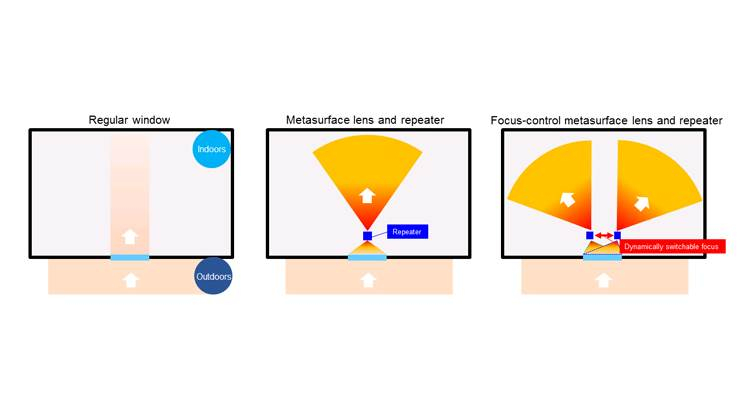NTT DOCOMO and AGC on Tuesday announced that they have developed a prototype technology that efficiently guides 28-GHz 5G radio signals received from outdoors to specific locations indoors using a film-like metasurface lens that attaches to window surfaces. DOCOMO and AGC also conducted what is believed to be world's first successful trial to direct 28-GHz signals passing through a window to specific locations indoors as well as raise the strength of the signals.
Newly emerging 5G networks as well as 6G networks of the future are expected to use high-frequency radio waves, such as 28 GHz. Although high-frequency signals enable the realization of advanced communication standards, they are subject to high attenuation over long distances and their high directivity resulting in low diffraction (or weak bending around objects) generally limits their range to within the line of sight of the transmitting base station. Consequently, it is difficult for high-frequency radio waves to penetrate windows, and even if they do they are attenuated to the point of not being able to propagate sufficiently to establish wireless communication links indoors.
The new metasurface lens is made with an artificially engineered material featuring a large number of sub-wavelength unit cells arranged periodically on a two-dimensional surface. Elements arranged in various shapes on the metasurface substrate can be attached to a glass window to direct radio signals to specific points ("focal points") indoors. It is believed that radio waves from an outdoor base station could be received on a window's broad surface and then efficiently propagated to specific focal points inside a building with the help of repeaters and reflectors.
The metasurface lens material is a transparent film that can cover virtually the entire inside surface of a window. The material has no effect on LTE and sub-6 band radio waves, so it can be used to improve indoor reception of 28 GHz radio signals without affecting the performance of legacy wireless frequencies.




















